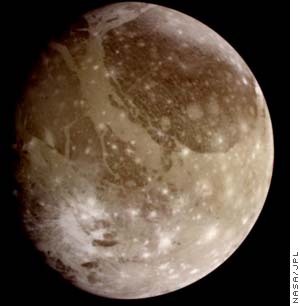
|
NASA's Galileo spacecraft data study on 12.16.2000 show an ocean of salty water deep below 170 kilometers thick frozen crust, making Ganymede the third of Jupiter's moons thought to harbor liquid water beneath its surface.
The ocean would stay liquid, sandwiched between layers of ice, thanks to heat from natural radioactivity in Ganymede's rocky interior. The new evidence strongly resembles what Galileo has already shown to be the case on Europa, where cracks open up in the ice crust, only to be filled with new, slushy material welling up from below.
The data have been gathered by the spacecraft when it flew past Ganymede on May 20, 2000. The flyby produced some of the highest resolution images of the moon, which show an icy surface surprisingly dominated by faulting and fracturing consistent with tectonic activity. Previously, scientists looked to volcanism to explain Ganymede's variegated surface.
Unlike Europa, where water may still lurk within miles of its surface and makes its way to the surface occasionally, Ganymede's deep-seated ocean today presents far less of a priority place to go prospecting for life, said Dave Stevenson, a Caltech planetary scientist.
Nevertheless, Galileo has proven Ganymede to be a far more intriguing place than scientists believed even a few short months ago: Ganymede is really a complete planetary system, not a desolated and dry moon.